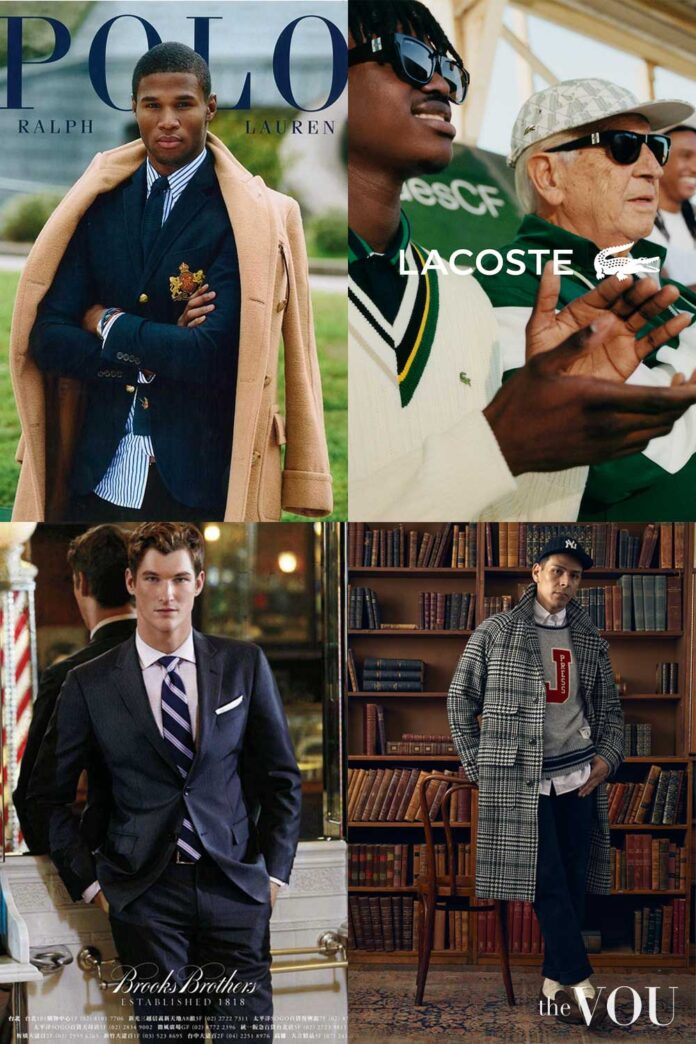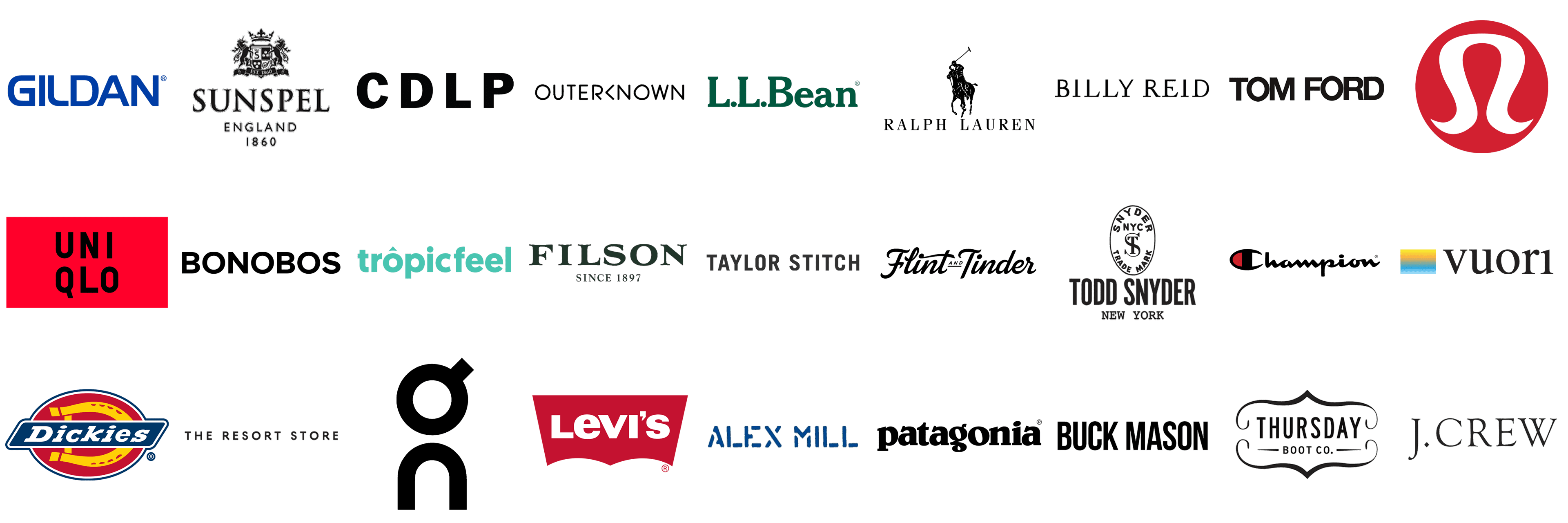The Relevance of Lasting Clothing: How It Impacts the Atmosphere and Your Storage room
Sustainable garments is increasingly recognized for its important role in lessening the ecological influence of the rapid apparel industry. By concentrating on environmentally friendly materials and ethical manufacturing techniques, it addresses pushing eco-friendly concerns. This shift not only benefits the earth but additionally affects consumer options, leading to a more thoughtful approach to closet management. Comprehending these characteristics raises important questions concerning fashion's future and personal duty fit it.
The Environmental Impact of Fast Style

Benefits of Sustainable Products
Sustainable products use considerable benefits, specifically via environment-friendly fabric choices that minimize ecological harm. These products likewise demonstrate toughness and long life, decreasing the need for frequent substitutes. Consequently, they add to a much more lasting style industry and advertise accountable consumer habits.
Eco-Friendly Material Selections
While the garment industry has actually long been related to fast trends and ecological damage, the surge of environmentally friendly material selections offers a transformative possibility. Lasting products such as organic cotton, hemp, and Tencel have acquired popularity due to their lower environmental influence. These textiles are often generated without hazardous pesticides and require much less water, decreasing their carbon impact - Branded Clothing. In addition, several green fabrics are eco-friendly, adding to a round economic situation by decreasing waste. Picking sustainable products not just sustains eco accountable techniques yet additionally promotes much healthier environments. As consumers end up being extra knowledgeable about their buying power, the demand for eco-friendly fabrics encourages brand names to innovate and embrace even more lasting production methods, eventually benefiting the world and future generations
Longevity and Long Life Advantages
Lots of consumers are significantly acknowledging the toughness and long life benefits of sustainable products in their clothes selections. Unlike conventional fabrics, lasting products such as natural cotton, hemp, and recycled polyester are engineered to hold up against damage, resulting in garments that last longer. This decreased regularity of substitute not only conserves customers money with time but also diminishes waste produced by rapid fashion. Furthermore, sustainable garments often uses environment-friendly manufacturing methods that enhance material toughness, adding to a reduction in the general carbon footprint. By purchasing durable garments, consumers can cultivate an extra sustainable closet while enjoying top notch pieces that keep their visual and performance with time. Subsequently, durability and long life stand as key benefits of picking lasting materials.
Lowering Waste Via Lasting Practices
Lowering waste in the apparel industry can be attained via ingenious practices such as upcycling and repurposing materials. In addition, adopting minimalist wardrobe approaches encourages customers to prioritize quality over quantity, eventually decreasing clothing consumption. With each other, these techniques contribute considerably to a much more lasting clothing design.
Upcycling and Repurposing Products
Upcycling and repurposing materials have arised as cutting-edge techniques in the style sector, changing discarded textiles into useful brand-new products. This strategy not only lessens waste but likewise urges creative thinking and uniqueness in apparel layout. By taking old garments and products, developers can produce special items that show individual design while minimizing the need for new sources. Additionally, upcycling commonly needs much less power and water compared to conventional production procedures, significantly lowering the ecological footprint of fashion. As consumers become extra knowledgeable about sustainability, the appeal of upcycled clothes continues to increase, promoting a circular economic climate. Eventually, these techniques add to a much more lasting future, where fashion focuses on ecological health over fast manufacturing and intake.

Minimal Closet Techniques
As people increasingly seek to decrease their environmental effect, embracing minimal closet techniques has actually obtained traction as a reliable strategy to lasting style. These approaches highlight top quality over amount, motivating consumers to curate a smaller collection of functional, sturdy garments. By concentrating on ageless pieces that can be blended and matched, individuals can lower the regularity Clicking Here of acquisitions and inevitably lower waste.Additionally, minimalism promotes conscious usage, urging buyers to assess the ethical and ecological effects of their choices. This method not just cultivates a much more lasting way of living however also streamlines everyday decision-making pertaining to outfit. As people welcome minimalist principles, they contribute to a fashion culture that values sustainability and responsible consumerism, ultimately bring about a more eco-conscious culture.
The Duty of Honest Labor in Sustainable Fashion
While lots of consumers are significantly aware of the environmental repercussions of their garments selections, the importance of honest labor techniques in sustainable fashion can not be neglected. Ethical labor incorporates fair wages, secure working problems, and regard for workers' civil liberties, creating the foundation of responsible fashion manufacturing. Brands that focus on moral labor not just boost communities however also set a criterion for liability in the industry.Moreover, the integration of moral methods promotes transparency, making it possible for customers to make informed choices regarding their purchases. This method contrasts greatly with quick fashion's exploitative labor models, which usually focus on profit over people. By sustaining firms dedicated to moral labor, consumers add to a system that values human dignity alongside ecological sustainability. Honest labor is not merely an add-on; it is important to the broader mission of sustainable style, making certain that the mission for eco-friendliness does not come at the cost of human legal rights.
The Influence of Lasting Clothes on Carbon Emissions
Lasting garments has the prospective to greatly decrease carbon discharges related to the fashion business. Traditional garment manufacturing adds especially to greenhouse gas discharges, largely due to energy-intensive production procedures and the use of non-renewable resources. In contrast, sustainable style concentrates on environment-friendly products, such as organic cotton or recycled fibers, which commonly require much less power to produce.Moreover, lasting brand names have a tendency to adopt more effective production methods, lessening waste and lowering total discharges. By prioritizing toughness and classic design, sustainable garments motivates customers to acquire look at these guys much less frequently, additional decreasing the carbon footprint related to overconsumption.Additionally, numerous sustainable brand names are dedicated to openness in their supply chains, enabling customers to make informed selections that line up with their values. Ultimately, moving in the direction of sustainable garments can lead to a substantial decrease in carbon discharges, adding to a much healthier earth and an extra sustainable future for the apparel industry.
Sustaining Local Economies With Lasting Options
The shift toward sustainable garments not only addresses ecological worries but likewise considerably advantages neighborhood economic climates. By selecting lasting style, customers typically sustain local artisans and small companies, improving area strength. These ventures normally operate a smaller range, focusing on craftsmanship and ethical techniques over mass production.Investing in locally made sustainable garments promotes job creation and stimulates financial growth within neighborhoods. As consumers come to be extra aware of the environmental influence of their acquisitions, they progressively seek items that show their values. This need urges regional suppliers to adopt lasting practices, adding to a round economy.Moreover, sustaining regional services decreases transportation exhausts, aligning with eco-conscious consumer habits. The interconnectedness of sustainable garments and neighborhood economic situations highlights the essential duty that private choices play in promoting both ecological and financial health and wellness. read review By promoting these neighborhood connections, neighborhoods can prosper while likewise working towards a more lasting future.
Transforming Your Closet: Tips for a Sustainable Wardrobe
As individuals seek to minimize their ecological effect, changing a wardrobe right into a sustainable wardrobe ends up being an essential step. One effective technique is to assess existing apparel, keeping just things that are put on routinely and that line up with sustainability objectives. Focusing on quality over quantity is important; buying durable items from environmentally friendly brand names can considerably reduce waste.Additionally, integrating used items can take a breath brand-new life into a closet while lessening ecological damage. Organizing clothes swaps with pals or contributing extra things can additionally advertise sustainability.When buying, people must look for materials that are organic, recycled, or naturally degradable, and avoid quick fashion sellers - Branded Clothing. Exercising conscious consumption by thoughtfully taking into consideration each acquisition can add to an extra sustainable way of living. By implementing these ideas, one can produce a closet that reflects personal style while supporting ecological stewardship
Regularly Asked Questions
How Can I Determine Sustainable Clothing Brands?
To determine sustainable garments brands, one must look into materials used, examine for certifications like Fair Trade, and analyze the brand's openness concerning their production processes, labor methods, and ecological influence, making certain environment-friendly and honest techniques are prioritized.
What Are the Prices Linked With Lasting Style?
The costs related to lasting style can vary substantially. Greater production expenditures, honest sourcing, and eco-friendly products commonly result in raised retail costs, which may prevent some customers while appealing to eco mindful shoppers.
Can Lasting Apparel Be Elegant and Stylish?
Sustainable apparel can without a doubt be fashionable and stylish. Developers progressively focus on ingenious products and moral manufacturing techniques, verifying that fashion and sustainability can coexist. Customers now have diverse choices that blend looks with environmental awareness.
How Does Washing Clothes Affect Their Sustainability?
Washing clothing substantially influences sustainability by consuming water and power, adding to contamination, and triggering microplastic launch. Constant washing can deteriorate fabrics, reducing their life expectancy and boosting the need for substitutes, inevitably exacerbating environmental worries.
What Is the Life Expectancy of Sustainable Garments Compared to Fast Style?
The lifespan of lasting clothes normally surpasses that of quick fashion products, frequently enduring numerous years due to high quality materials and workmanship. In contrast, fast style garments might degrade rapidly, necessitating more constant substitutes. Lasting garments is significantly identified for its critical function in minimizing the environmental influence of the fast style sector. While many customers are increasingly conscious of the environmental effects of their apparel options, the importance of honest labor practices in sustainable fashion can not be neglected. Branded Clothing. Lasting garments has the possible to significantly lower carbon exhausts linked with the style market. In comparison, sustainable style concentrates on environment-friendly materials, such as natural cotton or recycled fibers, which frequently call for less power to produce.Moreover, sustainable brand names often tend to embrace extra efficient production techniques, minimizing waste and reducing total emissions. By prioritizing sturdiness and timeless design, lasting clothes motivates customers to buy much less regularly, further decreasing the carbon impact linked with overconsumption.Additionally, numerous lasting brand names are dedicated to transparency in their supply chains, making it possible for customers to make informed choices that align with their values
Comments on “A Guide to Choosing Weather-Appropriate Branded Clothing Materials”